MFA Sunday School (Six: Observation Field Trip)
![]() Welcome to MFA Sunday School, a once-a-week, free, online writing workshop. MFA Sunday School posts are uploaded on Sunday mornings, though you can read them or participate any time — the comment section is always open for people to post a link to their work or ask a question. You can subscribe to blog posts via the RSS feed, or look for them under the category heading “MFA Sunday School.” If this is your first time in “class,” you may want to jump back to the first post in the series in order to understand how things work, or peruse all of the past lessons as well as a glossary of terms by reading the MFA Sunday School Glossary and Course Archives.
Welcome to MFA Sunday School, a once-a-week, free, online writing workshop. MFA Sunday School posts are uploaded on Sunday mornings, though you can read them or participate any time — the comment section is always open for people to post a link to their work or ask a question. You can subscribe to blog posts via the RSS feed, or look for them under the category heading “MFA Sunday School.” If this is your first time in “class,” you may want to jump back to the first post in the series in order to understand how things work, or peruse all of the past lessons as well as a glossary of terms by reading the MFA Sunday School Glossary and Course Archives.
Hopefully you’ve tried your hand at writing a sestina, the first fixed form poem we’re going to work with (after we get a few fixed forms under our belt, we’ll switch to looking at imagery, sound, etc) even if you haven’t posted one yet. Surely with several thousand tuning in for this series every Sunday, there are more than four smart, brave souls willing to post their poem?
Moving back into the world of fiction.
Brian Christian wrote a book called The Most Human Human about the Loebner Prize Competition’s version of the Turing test which pits humans against computers to determine whether or not a “blind” third subject can accurately label which is the computer and which is the human as he/she communicates with both. The computer that is able to most closely imitate human communication receives the label, “the most human computer” and the human who is chosen most often as sounding like a person is labeled “the most human human.”
Okay, so I haven’t actually gotten to reading the whole book (though baby steps — I’ve downloaded it for iBooks), but I love this concept of a contest to determine who is coming across as human, and I think it is something that all writers need to grapple with in creating characters. Are your characters believable? Do they make very human choices (which usually means complex choices) or are they more two-dimensional and go for the obvious? Do they have tiny, unique traits — especially in their voice — which help the reader keep all of your characters straight in their head?
Let’s take the Harry Potter series as an example since it’s a widely read series, and you’re likely familiar with the characters. Who said: “I enjoyed the meetings, too. It was like having friends.” There are only two characters who could have uttered that line: Neville or Luna. Certainly Harry has never struggled to find friends. And noticing a lack of friends isn’t very Ron-like or Hermione-like. Can you imagine Draco Malfoy saying that? And now, having narrowed it down, you realize that Luna is much more blunt, much more self-deprecating, much more likely to say exactly what she is thinking than Neville.
I’m certain I could write out twenty more random quotes, and you’d be able to identify the speaker even without a tag. That is because Rowling creates characters that would win in my version of the Loebner Prize for “most human character.” There are plenty of other very human characters in literature to television writing: from Ramona Quimby to Foreman on House. And there are also plenty of characters who would fail the test and have their two-dimensional “characterness” come through more than their ability to imitate a real person. They’re the characters that just don’t ring true.
So how does one construct the “most human character?” Through observation, retention, and utilization, or what I’ll keep returning to as ORU. Note to self: create a glossary of all my made-up writing terms*.
So what is ORU — it’s the process that writers go through for bringing elements of the real world around them into their fiction. (1) Writers observe. They notice the small details. If you don’t naturally notice the small details yet, you can hone this skill with the practice homework below. (2) Writers retain information, filing it away for later use. Some writers can do this in their brain, other writers keep notebooks or notecards with tiny details they want to use in a story later. (3) Writers utilize those tiny details to create believable characters. That is ORU in a nutshell, and we’re going to be returning to this concept and practicing this concept over and over again throughout this online course.
Later on, we’re going to go on an observation field trip to observe space (because you also want to create believable settings), but right now, we’re just focusing on people. And we need to narrow this down even further: today we are only looking at how humans move; what their movements say about their internal state. See, there are dozens of tiny working parts to observe, so it helps to narrow our focus for the moment to just one aspect of being human. No extra points will be given if you diffuse your focus and try to write about how humans sound or how humans choose words — you are only looking at how humans move. Ready to start your homework?
Homework: Go out to a public space with a partner — a restaurant, coffeehouse, park. Leave all distractions at home (especially… I’m sorry Wolvog and ChickieNob… kids). Set the timer for twenty minutes and without talking to each other (and try not to even look at the other person), write down everything you notice about the people’s movements around you. Does someone keep scratching their neck? Tapping their pen? Rubbing their hands over their eyes? What are you picking up from their small movements? Can you sense that the neck scratcher is nervous, the pen tapper impatient, the eye rubber trying to hold back tears? What small traits are you picking up on that give you a piece of information about the sort of person you’re viewing. After twenty minutes, match up what you observed based on what your partner observed, and like Scattergories, you get no points for the things you both observed and processed similarly. You get one point for the things that you both observed but processed differently. (For instance, if you both noticed the neck scratcher but your partner thought he looked as if he was nervous whereas you thought he looked bored.) You get two points for everything you observed that the other person didn’t observe at all.
If you ended up with the low score, ask yourself whether it was due to where you were sitting (if you’re facing the person, you’ll notice more about them than if they’re behind you and your partner is facing them) or if you were distracted. Did you check your Twitter feed during the 20 minutes? If you did, you probably missed noticing small moments.
This exercise is about:
- Seeing how good you are at seeing the small movements. [OBSERVATION]
- Recording/remembering the small movements for later use (along with what information they convey. A note might look like: “people scratch their necks when they’re bored and distracted. If I have my character scratch her neck in the scene coupled with the right words, I will be able to convey boredom without ever using the word bored.”)** [RETENTION]
- And in the future, you’ll utilize these notes to create believable characters. [UTILIZATION]
See? ORU — observation, retention, utilization.
If you get more time this week, additionally do this exercise on your own. While you’re waiting in line at the grocery store, while you’re talking with a friend, while you’re looking for books at the library. Keep a notebook with you at all times so you can jot down these small observations and have them in a single place to use later.
* I paused from writing this lesson in order to compile terms and past lessons on a single page which you can now find here and will be linked to on my right sidebar as well as the top of each MFA Sunday School post. Now you can quickly see a lesson where each term is used so you don’t have to wrack your brain trying to remember what ORU means the next time I use it.
** We’ll come back to this concept, but it’s a popular idea in writing: showing and not telling.





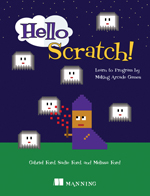
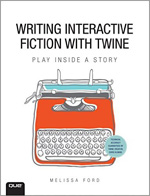
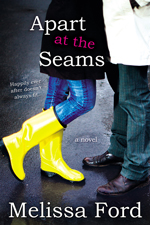
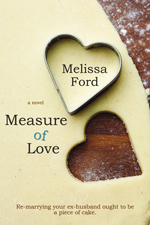
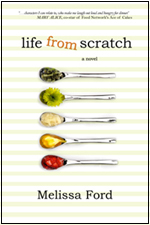
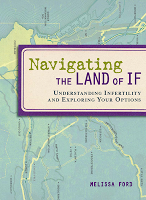


2 comments
As I near the end of the revisions for my novel, I’m realizing that I need to do this with my characters– pretend I’m sitting across from them at a table and watching/recording what I see. I tend to write little on appearances in my fiction, which makes the characters feel flat and two-dimensional.
Great exercise, Mel!
Love this exercise!
I am still working on my 7 characters and have found it really helpful to picture how they would behave, sound, look, etc. at various places I go throughout the day…what drink would she order at Starbucks? what would she wear to the grocery store? how would he sit in his seat at the movie theater? what music would he listen to on this road trip?
Speaking of my characters, I would love to have someone review the two I have completed so far. This is my 1st attempt at this sort of exercise and I’d like to get some feedback on my work before I make the same mistakes on all 7 🙂
If anyone is interested, you can leave a comment on my blog & I will get in touch with you. If you post your email address in a comment, I won’t publish it I would be happy to review your characters as well:
http://okiwillshowyou.blogspot.com